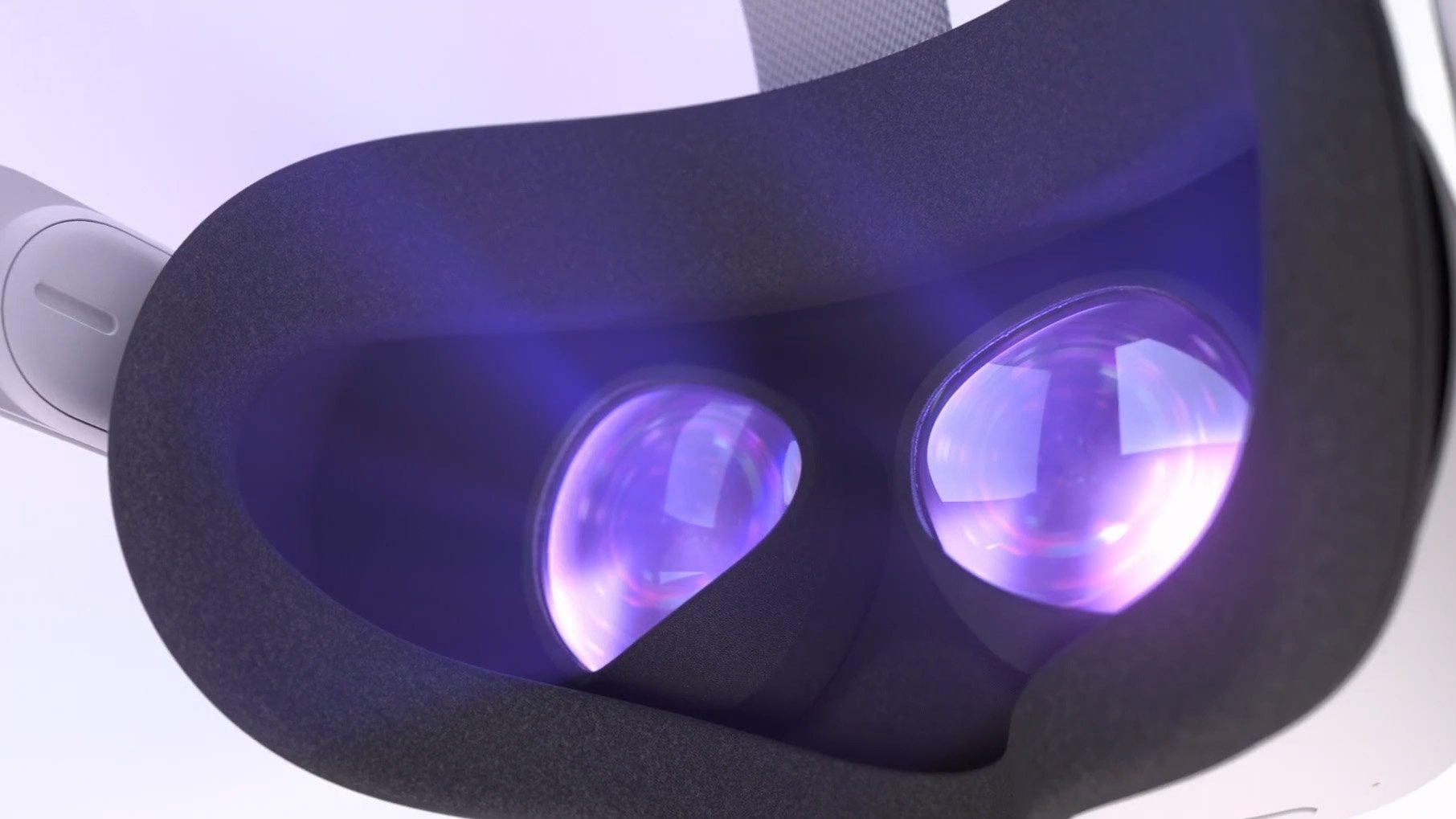Oculus Quest 2: What resolution is the display?

Best answer: The Oculus Quest 2 display features 50% more pixels than the original Oculus Quest, with a resolution of "nearly 4K."
More pixels for the Oculus Quest 2
The Oculus Quest 2 features a display with 50% more pixels than the one found on the Oculus Quest. A brand new, single-panel, fast-switching, RGB-stripe LCD sits inside the Oculus Quest 2 with a resolution of 1832x1920 pixels per eye. That totals a nearly 4K resolution when combined. Comparatively, the Oculus Quest's PenTile OLED display featured a resolution of 1440x1600 pixels per eye.
Having a higher-resolution display and more processing power means developers are sure to pack even better graphics into Oculus Quest 2 games. Better graphics usually means larger games, so it's a good thing the Oculus Quest 2 has up to 256GB of storage.
A diamond PenTile or RGB Stripe display for the Oculus Quest 2?

The original Oculus Quest utilized a PenTile OLED display with 1440×1600 resolution per eye. With a PenTile display, each pixel is made up of sub-pixels that are arranged in a diamond shape. When placing these pixels next to each other, there's a natural gap between pixels because diamonds don't fit perfectly together in a grid. RGB Stripe displays, like the one used in the Oculus Quest 2, use a simple vertical row of sub-pixels to create a single pixel. These rows can be placed side-by-side in a much tighter configuration, leaving smaller gaps between pixels.


Facebook is utilizing an RGB stripe display on the Oculus Quest 2, as they did on the Oculus Rift S, which means an automatic increase in clarity. That's because our eyes can no longer see the space between the pixels and, therefore, interpret that as a much higher-resolution display. You can see the difference in the images above, taken from our review of the Oculus Quest 2.
Be an expert in 5 minutes
Get the latest news from Android Central, your trusted companion in the world of Android
The change in pixel structure doesn't increase the pixel count itself, it makes a display crisper by placing pixels closer to each other. To our eyes, pixels that are closer to one another look almost identical to simply adding additional pixels. The Oculus Quest 2's display isn't just higher resolution — it also features more densely placed pixels, making the difference feel even more dramatic than a resolution increase alone would.
What type of display for the Oculus Quest 2?
The Oculus Quest 2 utilizes a fast-switching LCD.
The original Oculus Quest utilized an OLED display, which is known for its deep colors, perfect black levels, and super low latency response times. This past year, Oculus and several other manufacturers switched from PenTile OLED panels to fast-switching LCD panels, a new type of display technology developed for VR headsets.
While fast-switching LCD panels don't feature deep colors or perfect blacks like an OLED display, they do feature ultra-fast response times and are generally more pixel-dense. That means that, even at the same number resolution, a fast-switching LCD looks much sharper than a PenTile OLED display does.
What's the refresh rate of the display on the Oculus Quest 2?

The Oculus Quest 2's display supports 72Hz and 90Hz refresh rates. The original Oculus Quest only supported 60Hz and 72Hz refresh rates. A higher refresh rate means more than just smoother action in VR, it also means fewer people will suffer from motion sickness while playing. At launch, the Oculus Quest 2 only supports 90Hz on a few official Oculus apps but can be enabled for all games and apps with some tweaks.
Facebook has been angling the Oculus Quest line of products as the solution for gamers looking for an easy, quality VR experience. It makes sense for them, then, to choose specs that best fit this goal. An increased refresh rate fits within that paradigm and makes the Oculus Quest 2 experience even smoother than the original.


